Full Metal La-Xnumx
In Lavochkina Design Bureau, the improvement of the air combat aircraft did not stop for a minute. All new aviation industries and related industries were examined, tested and, in case of a positive effect, were introduced on a fighter. For example, in the summer of 1944, the ASh-83 motor passed bench tests. Its take-off power compared to the ASh-82FN increased slightly, by only 50 hp. (less than 3 percent), but in combination with the combat mode and higher altitude, he promised a noticeable improvement in flight performance, and Lavochkin immediately sets it to La-7. In August, an experienced fighter first exceeded the 700-kilometer speed limit.
Following this promising, as it seemed, the engine was installed on a new fighter «120». The aircraft almost did not differ from its predecessor, the La-7, but if you look under the casing, you could find a lot of metal products that reduced the weight of the airframe by almost 150 kg. Due to a more rational design of the fuselage, consisting of the front metal and rear wooden parts, it was possible to expand the cockpit. The wing became one-sided, and the weight of its one square meter dropped to 22 kg. For La-5, this parameter reached 23,8 kg, for Bf 109G-2 - 22 kg, and for P-39 “Airbrake” - 21,4 kg. Chassis lightened on 22 kg.
Replacing the synchronous guns ShVAK on HC-23С caliber 23 mm, installed on the new truss carriage, increased the second salvo side weapons almost 1,5 times. But perhaps the most important difference was the wing with a laminar profile, which made it possible to increase speed by 20 km / h.
The tests of the prototype aircraft began in January of the 1945 year, and in July it reached a speed of 735 km / h, which is 24 km / h higher than that of the La-7 with the same engine. And all this on the nominal mode of the engine, and in fact he had a reserve - the combat mode, which, however, was not able to test. The fact is that the ASH-83 required refinement, during the tests they changed five motors. Apparently, this circumstance was the reason for the cessation of further work on it. Taking this opportunity, I note that after the war a number of technical solutions tested on ASH-83 were used to create the ASH-82T engine, but it appeared when fighter aircraft switched to jet propulsion. ASH-83 decided the fate of the plane "120", and two of its copies remained in the discharge of the experienced.
The 126 aircraft, designed for the ASH-83 engine, became the direct development of the fighter, but due to the cessation of production of the latter, the tested ASH-82FN was installed on it. On this machine, the wing with laminar profiles was finally completed. The pressure on the surface of this wing was distributed in such a way that there was no need for slats. As a result, the aircraft, compared with the La-5 and La-7, disappeared a serious defect associated with the asynchronous release of the slats, and the pilot felt approaching the critical angle of attack for a slight trembling of the control stick. The aircraft entered the tailspin smoothly and, with the proper coordination of its control organs, left it without delay.
Flight tests (pilots A.V. Davydov, I.E. Fedorov and A.A. Popov), which ended in April 1946, did not reveal any particular advantages in the flight characteristics of the vehicle compared to the La-7, except for the armament consisting of Four synchronous guns HC-23. Their second salvo increased to 6 kg, while for La-7 with three B-20, it did not exceed 3,1 kg. Such story World aircraft did not know. It was an unprecedented case of creating a synchronous mechanism for a gun of such a large caliber and, moreover, with a moving barrel. But the designer of aviation weapons A.A. Richter brilliantly coped with the task. It should be noted, and test pilot K.N. Novikov, who brought the gun installation on the fighter. In one of the flights, due to the breakage of the synchronous mechanism, the propeller blades were shot through, but the pilot safely landed the wounded vehicle. This case once again confirmed the possibility of firing four guns through a three-bladed propeller.
The 126, as well as the 120, remained at the level of the experienced ones. But the work of the Lavochkin team was not in vain. The technical solutions worked out on these fighters were requested when creating the future La-9, or, as it was also called, "All-metal La-7".
Airplane "130"
This car was designed under the engine ASH-83. It was expected that its maximum speed would reach 725 km / h at an altitude of 7500 m, range - 1450 km, and the ceiling - 10 500 m. But the planned engine, as you already know, did not wait, and it was replaced with the tested 82FN. The first copy of the 130 fighter was built in January 1946 at the plant number 21. The following month, the car was transported to Khimki near Moscow, to plant number 301, where the Lavochkin Design Bureau had returned by that time. Factory tests, during which 30 flights were completed, ended in May 1946.
On the ninth of June the aircraft was presented for state tests at the Scientific Research Institute of the Air Force. Leading the car were engineer-pilot V.I. Alekseenko and test pilot A.G. Kubyshkin. The first flights allowed to reveal serious defects related to stability, controllability of the aircraft and its armament. On July 8, the car was returned to OKB-301 and only 17 days later continued the tests, which ended on October 10 with a positive result. During the tests, they lost almost six weeks to replace the engine and refine weapons.
It should be noted that the Air Force Research Institute was engaged not only in testing, but also in fine-tuning the machine. In particular, the control system was refined within its walls, bringing the control handle to normal. The Air Force Scientific Testing Institute did something that was beyond the power of the OKB. At the same time, on the recommendation of the future academician G.P. Fistula, sharpened the profile of the center section nose, significantly improving the corkscrew properties of the aircraft.
In the tests of the new fighter took part AG. Proshakov, V.I. Khomyakov, A.G. Terentyev, Trofimov, A.P. Suprun, Heroes of the Soviet Union I.V. Timofeyenko, V.G. Masich and A.G. Kochetkov, Yu.A. Antipov, L.M. Kuvshinov and G.A. Sedov, later received the title of Hero of the Soviet Union.
According to the results of state tests, the pilots noted: “The equipment of the cockpit of the 130 is much better than on the serial La-7. The presence of a radio compass, artificial horizon, a remote compass and a respondent (“yours is someone else's.” - Note. Auth.) Allow you to fly an aircraft under adverse weather conditions and successfully conduct combat operations. Using the main controls is convenient and easy. The absence of propeller-engine automation on the plane is a significant drawback for a modern fighter ...
In terms of its dimensions, the cockpit is quite satisfying to the fighter pilot, the landing is comfortable and the pilot doesn’t tire during a long flight ... Overview forward and to the side is good, the back frame is obstructed (antenna. - Note by author) of the radio compass.
On taxiing the plane behaves well, the crutch stopper works normally. Taking off on an 130 is similar to taking off on La-7. After separation and on the set, the stability of the aircraft is quite sufficient.
The technique of performing aerobatic figures on an “130” aircraft is the same as on the La-7. The aircraft is available to pilots of medium qualification.
Due to the lack of slats, the unpleasant moment of their asynchronous exit disappeared, reflected on the pilot's handle and the aircraft's behavior, which is taking place on the La-7 ...
The aircraft parachutes up to speed 170 km / h. Stalling into a corkscrew is warned by a slight flinching of the aircraft. The entrance to the corkscrew is not sharp and can be easily warned by the pilot to give a reverse leg. The behavior of the aircraft in the spin process is similar to the aircraft La-7 ...
The plane dives steadily, with no tendency to tightening and without twisting. The permissible dive speed of 700 km / h on the instrument at the output is insufficient, it must be increased to 750 km / h ... The plane can fly across the horizon with an abandoned handle ... "
In the same document, it was noted that the 130 aircraft had a significant advantage over the La-7, Yak-3 and Yak-9U in terms of the range and duration of the flight in the most advantageous mode. This advantage of the 130 aircraft in range can be used to escort nearby bombers for the full radius of their operation, subject to a further increase in fuel reserves.
In terms of the power of the firing salvo, the 130 aircraft had a significant superiority over the La 7, Yak-3 and Yak-9. The 130 aircraft could perform combat missions during the day before the practical ceiling, as well as in adverse weather conditions. For the production of night flights the plane is not equipped, which limited its combat use.
In aerial combat on horizontal and vertical maneuvers at altitudes 2000 — 6000, the 130 and La 7 aircraft are equivalent. During 20 — 25 minutes of the battle could go to each other’s tail for a range of aimed fire ...
In aerial combat with the Yak-3 on a horizontal maneuver at heights 3000 — 5000, the latter had a slight advantage over the 130 aircraft. On the left and right turns, the Yak-3 aircraft entered the tail of the 130 aircraft for a distance of 200 — 300 meters through 5 — 6 turns. On a vertical maneuver at heights 3000 — 5000, the Yak-3 aircraft also had an advantage over the 130 aircraft.
The 130 had a much better view from the cockpit compared not only to the La-7, but also to the German FW190 and the American Thunderbolt X-Rum X-fighter. At the same time, 47 revealed defects in the aircraft, its equipment and weapons. Seventeen of them needed to be eliminated first.
From the La-7 fighter "130" a little left. First of all, the new aircraft was of all-metal construction, which reduced the weight of the airframe. The wing has become one-spar with torsion plating. The laminar profile of the wing with its improved conjugation with the fuselage, achieved with the help of sanding, or, as they were then called, Feringov, contributed to the reduction of drag.
Improved temperature of the cockpit due to sealing it and the power plant compartment, as well as adjusting the suction of air supplied to the motor from a special intake.
The all-metal construction of the airframe allowed the number of gas tanks in the wing to be increased to five with a total capacity of 850 liters (on an experienced machine, they contained 825 liters).
The plane was completed with four synchronized guns HC-23C with 300 ammunition ammunition. It should be noted that the future La-9, equipped with some of the best guns, was rightly considered the most armed piston fighter. Fire control - pneumatic, which allowed to conduct as a separate firing of the two upper or two lower guns, and volley from all barrels. On serial machines, the PBP (B) sight, mounted under the canopy of the flashlight, was replaced with АСП-1Н (factory designation “97-П”). This optical sight, developed at OKB-16, was a copy of the MK-2D English sight, used on fighters supplied to the USSR during the war. In the nose of the right half of the center section (in the plane of the released right landing gear) a photo gun “Fire Chald” of the type “6” was installed.
In 1946, the aircraft was launched into serial production at plant No. 21 under the product designation “48” (type “48”). In parts, he received the official designation La 9. The plant built the first four serial machines in August of the same year, but only from 20 December they were handed over to the customer.
In 1947, the first 30 vehicles were sent for military trials to the 176 Guards IAP (commander Lieutenant Colonel KK Kotelnikov), stationed in the Moscow region at Teply Stan airfield. Today it is one of the districts of Moscow, and its inhabitants do not even suspect that half a century ago their skies were shuddered by the howling of aircraft engines, and training air battles were taking place over the airfield. Air battles conducted with MiG-9 jet fighters during troop tests of La-9 ended in December 1947 of the year and showed that on La-9 contours went to the tail of the "flashes" on the second and third turns, but jet fighters, having a large speed, quickly left them.
In 1948, the regiment created an aerobatic team flying to La 9. It was headed by the Hero of the Soviet Union, SA Kumanichkin (later commander of the 176 th iap). This group demonstrated aerobatics in an air parade in Tushino in August 1948.
The rearmament of a number of other regiments of the Air Force and Air Defense Aviation began on X-NUMX on 1947. By the end of the year, these fighters were operated in the units that were part of the 9, 1, 2,4, 9,11 and 14,16 th air armies. They were stationed not only in the USSR, but also in Poland, Romania, North Korea and China. For example, the 17-th mixed air corps based on Port Arthur in China included the 83-iap armed with La 351.
The transfer of parts to these machines took place until the middle of the 1951 year. So, the 19-th air defense unit, deployed at the Vaskovo airfield near Arkhangelsk, replaced the English Spitfires IX with La-9. One of the last in May 1951, mastered the new machine 401 th ip 297-iad.
A small number of La-9 and UTIL-9 were exploited at the Yeisk and Bataysk aviation schools until the 1952 year. Moreover, after a short retraining, graduates of these schools were transferred to reactive MiG-15.
During the operation of the La-9 and its training version, UTIL-9, in 1949, a massive defect manifested itself - the deformation of the 12-th frame, which was the result of over-weighting the machine. Nevertheless, the pilots praised the La-9 for maneuverability and handling. By the middle of 1951, the 640 La-9 was in use in the Air Force, and 245 was not involved in the air defense aviation, and they did not participate in the hostilities.
In May, 1947, the pilots AG. Terentyev and K.F. Volyntsev conducted in the Institute of the Air Force control tests of two production machines, which confirmed the previously obtained characteristics, except for the range. With a flight weight of 3675 kg, the first aircraft was poured in 850 liters, and in the second - 825 liters of fuel. The technical range at the most favorable mode (altitude 1000 m, instrument speed 381 km / h) was 1955 km with the duration of the flight 5 hours 09 minutes against 1735 km and 4,5 hours from an experienced aircraft. The speed range when flying with an instrument speed of 430 km / h at an altitude of 6000 m was 1060 km with a duration of 3 hour 21 a minute.
It should be noted that during the operation of the La-9, disruptions in the synchronization mechanism were rare, but one case should be told. During the factory tests pilot G.S. Bolshakov serial la-9 when firing cannon detached blades propeller. Fortunately, the pilot managed to land the car, devoid of traction. The subsequent investigation revealed that the engine plant had mistakenly sent a motor with a different gear ratio.
Starting from 1947, La-9 could be found in the units that were part of 1, 2, 4 (Poland), 9 (Korea - Manchuria), 11, 14, 16 and 17 (Romania) air armies , as well as in the Moscow Military District.
The la-xnumx was constantly improved. It was only in 9 that 1948 changes were introduced into its design that improved the quality of the car. An APSN-197 supercharger was installed on one fighter, which was introduced into the series already on the La-44.
In 1946, the 133 fighter was built with a more powerful and high-rise M-93 engine. This resulted in the installation of a new oil cooler and a suction inlet. Increased the length of the car. Its armament also consisted of four HC-23C synchronous guns, and the take-off weight reached 3500 kg, which is almost 100 kg more than that of the La-9. It was expected that its speed would reach 740 km / h at an altitude of 6500 m, but the factory tests started on January 10 on 1946 showed that the engine was completely unsuitable for flight, and in 1947 on the machine they installed ASH-82М, which was also experienced. But with him the plane was left in a single copy.
In the spring of 1949, the La-9 was tested and the APPS-TsAGI device, recommended for installation on serial machines, was designed to prevent high overloads and stalls.
Sparka UTI La 9
The training fighter, originally designated as “140” and then La-9B (exported), was distinguished by a double cabin with duplicated instruments, as well as the HMG flight control, dual control of the aircraft and the engine, as well as non-moving kostyulnym wheel . The number of gas tanks was reduced to three, retaining one HC-23 gun with 100 ammunition.
Additionally, equipment was installed for night flights, curtains for teaching flight using instruments in the front cockpit, a photo set for scheduled shooting, an intercom and a device for towing a cone target intended for training fighter pilots.
In May, 1947, La-9, passed factory tests, completing eight flights, and 2, June, began its state tests. The lead engineer and co-pilot at this stage was V.I. Alekseenko, and the leading pilot - I.M. Dziuba
Like any new technology, the La-9В possessed a number of defects and shortcomings, but according to the flight and flight data, as well as the amount of equipment, it could be widely used in schools and air force units as a training fighter. In terms of flight quality, stability and controllability, the aircraft was similar to the single combat La-9 and is available to medium-skilled pilots for piloting from both the front and the rear cockpit.
The serial production of Spar-ki began in April 1948 of the year at the plant number 99 in Ulan-Ude under the designation UTI-La-9 (UTIL-9, product "49"). In the same year, the machine number 49990609 was relocated to the Scientific Research Institute of the Air Forces for carrying out control tests. After their completion, the aircraft was transferred to the 301 plant, where the gun was replaced with a UBS machine gun, and the ASP-1H sight — ASP-3N. At the same time, new lighting and fire-fighting equipment was installed. The crutch was replaced with a new one, like on La 11.
In this form, the aircraft passed state tests and was recommended in the series. Pilot P.M. Stefanovsky and pilot engineer I.N. Sokolov.
In the conclusion of the act, according to the results of state tests, it was noted that the use of the UBS machine gun allowed the aircraft to be used for training flights with firing not only at ground targets, but also at air targets (when firing from a cannon there was a high probability of hitting not only the target - the cone, but also towing vehicle). Nevertheless, the plant produced Sparky and with guns HC-23.
From 1947, 99-th plant built and combat vehicles. The tests of the first of them, assembled from parts of the Gorky plant, began on July 9.
By the middle of 1951, the 640 La-9 was operated in the Air Force, and 245 in the air defense fighter aviation. Some cars were sent to friendly countries. In the same year, at the repair bases of the Naval Aviation, the 100 fighters were converted into training UTIL-9. The rest, who were in the ranks, have undergone modernization. They installed lighting equipment for flying at night and soft gas tanks.
Unfortunately, as with the delivery of the La-9 to the customer at the factory, and during the operation was not without accidents. Only in 1948, four chassis failures occurred - at the time of landing one of the main pillars was formed. There were other defects, but it is impossible to assert that the plane suffered from some kind of congenital defects.
According to the results of the state tests of the 130 aircraft, it was stated that “in order to further improve the flight-technical data of the 130 aircraft, and also to make it possible to broader tactical use of the aircraft, it is necessary to work out the version of the fighter aircraft as a modification escorting bomber with a cruising speed of bomber at least 2500 km. ” This document, which became the basis for creating the future of La-11, was approved
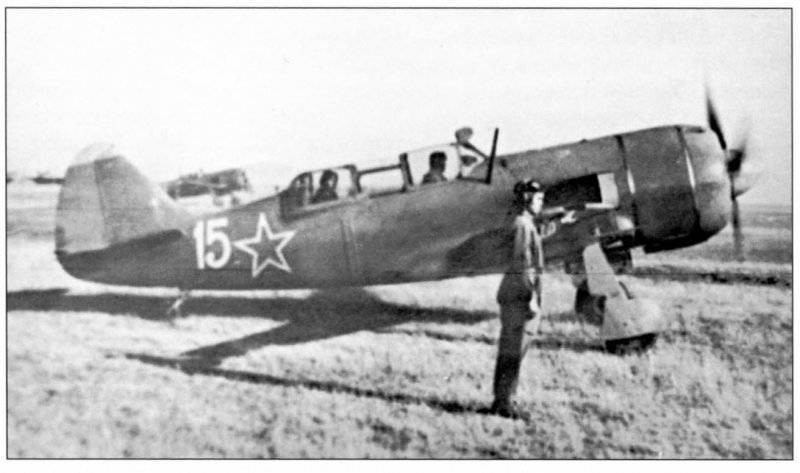
La 9 with power plant from La 11. Yeysk Military Aviation School of Pilots by Decree of the Council of Ministers of the USSR 18 October 1946
The training fighters in those years were clearly not enough, and in the spring of 1951, the military issued an order to the factories No. 21 and No. 99 to manufacture 100 sets of parts for reworking the La-9 into a double version.
La-9 was in service not only in the Air Force of the Soviet Union, but also in China and North Korea, where they happened to fight. The aviation of the People’s Liberation Army of China (PLA) after the end of the civil war consisted of a small number of captured Japanese aircraft, which were combined in the summer of 1949, into a single 1 squadron. After the signing of the Soviet-Chinese agreement for the armament of the PLA, Soviet military equipment, including airplanes, began to enter.
According to the plan, approved in September by 1949-nd by the Deputy Commander-in-Chief of the Air Force SA F.A. Agaltsov, in the same year, the Chinese planned to transfer on 60 combat and training La-9. But shipments began only in the 1950 year. Since the production of these aircraft have ceased, the machines were transferred from combat units.
The 1-i AE did not exist for long, and in the summer of 1950, on the basis of it, the 4-I mixed PLA air fleet was created, where the training of Chinese pilots began. At the end of October, the 4 th air brigade was declared combat-ready.
To speed up the creation of the PLA Air Force, from the end of 1951, Soviet air regiments began to relocate to North China. Among the first were 304 and 401 and 297, located at airfields in Harbin and Goudianzi.
Since the war was already under way in Korea, the Soviet units in China took up combat duty, which resulted only in maintaining the readiness of duty units. Soviet pilots performed only one interception flight, and that was unsuccessful. At the same airfields began training flights of Chinese pilots. By August 11, 43 Chinese pilots were trained, which allowed staffing two regiments of 9 and PLA, and personnel of 297 and 1951 returned to the Soviet Union in the fall.
La 9 in China was used to escort Tu-2 bombers and transport aircraft in the fight against the Kuomintang. These fighters served in China until the 1960 year.
In March, the United Air Force (OVA) was created in Korea 1951, which had only six La-9s deployed at the Xinzhou airfield.
But the Soviet Union did not limit itself to these deliveries of La-9 to Korea, although the total number is not yet known. The retraining of Korean pilots took place in China.
The first case of the combat use of North Korean fighters, apparently, took place on June 20, when a pair of La-9 was attacked by about a dozen "seybrov." As follows from the foreign press, in an air battle, the pilot of Ki Ki Raku, later the hero of the DPRK, shot down two jet and one piston fighter of the enemy. On the same day, the Americans intercepted another pair of Korean La-9. But the results of this, as, incidentally, of the previous battle, are doubtful, since the pilots La-9 could only fight with jet fighters on the horizontal lines, and this type of battle is considered defensive. Winner of the same pilot La-9 could only under favorable conditions of a number of circumstances.
For this reason, the North Koreans began to use La-9 as night bombers with bombs suspended under their wings. In 1953, they had the opportunity to strike at Chokhodo Island and Seoul, the capital of South Korea. Judging by the American data, on July 1 two La-9 were shot down, and after a fortnight another La-9 was shot down. Both victories are attributed to F4U night fighters.
- Nikolai Yakubovich, "All aircraft Lavochkina"
- Achtung! Achtung! In the air La Xnumx
"Standard 1944 of the Year" La-7
Full Metal La-Xnumx
The last piston la fighter
Semi-reactive la
Reactive firstborn Lavochkina
Unmanned aerial vehicles Lavochkin
Rocket "Umbrella" Lavochkin
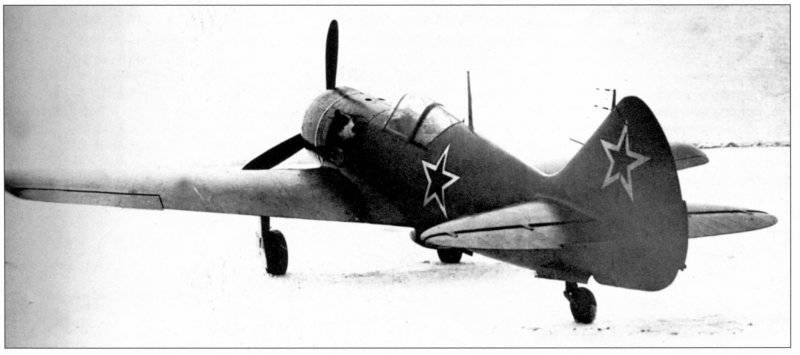
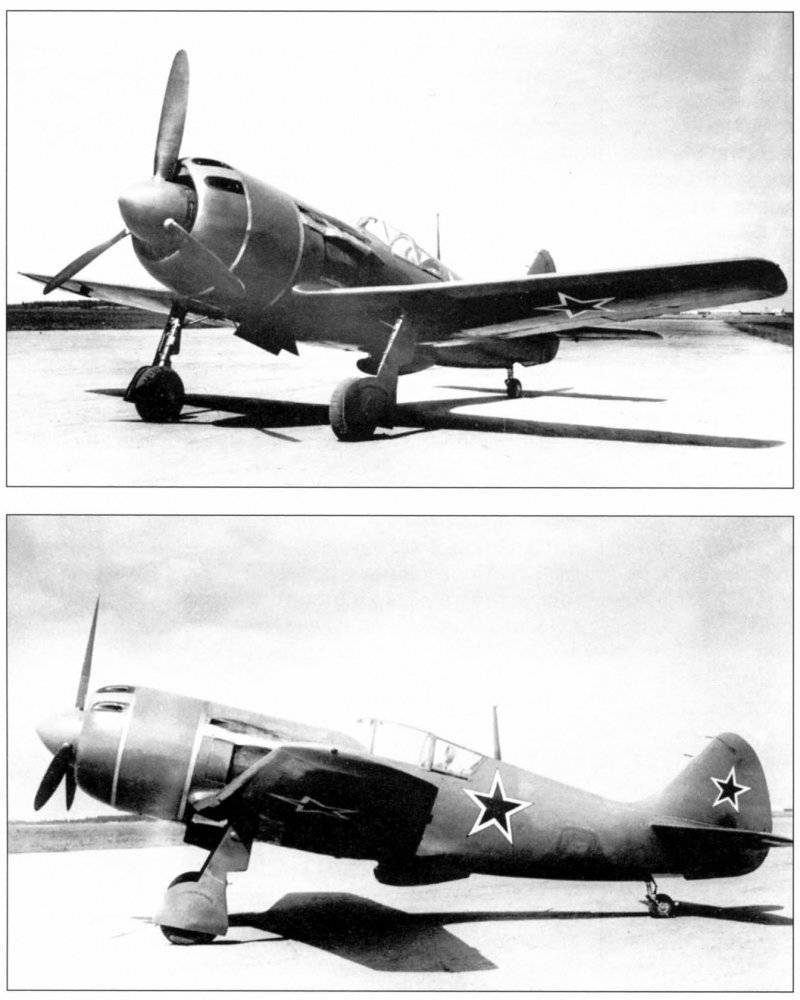
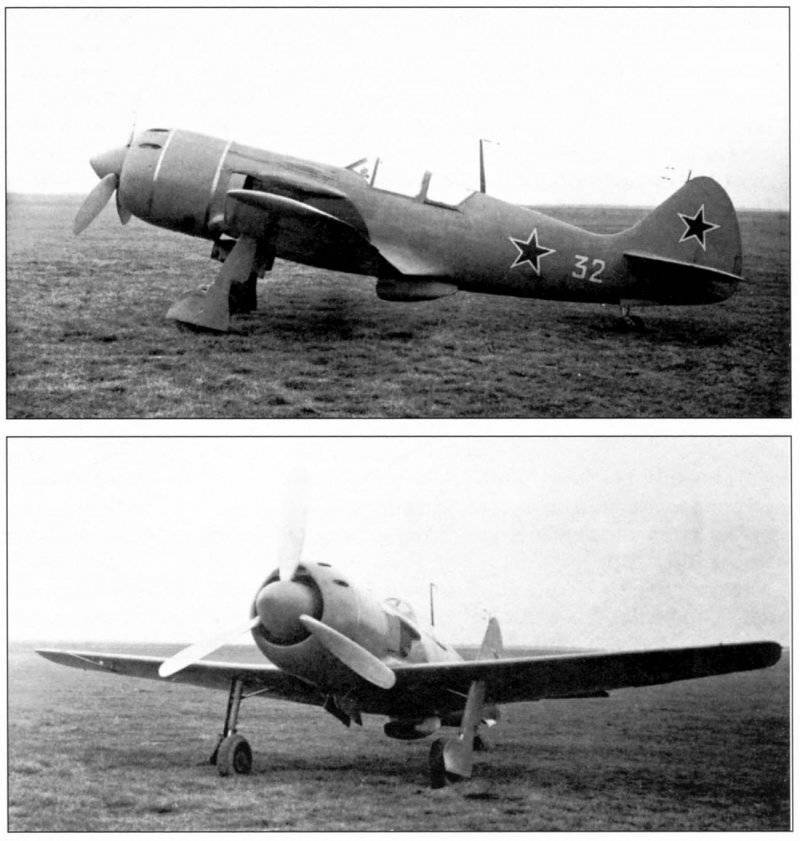
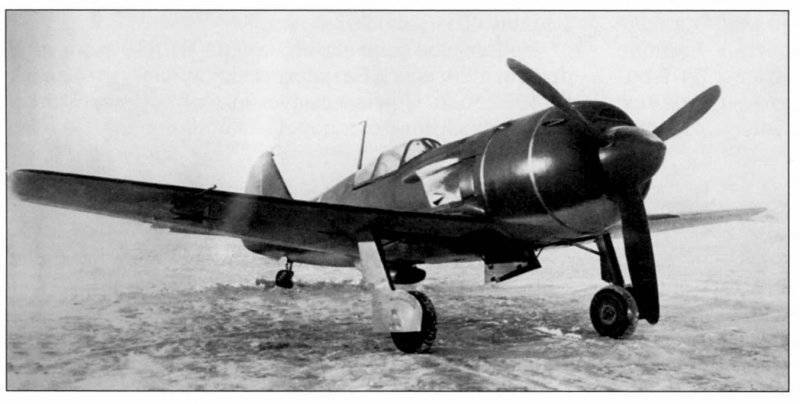

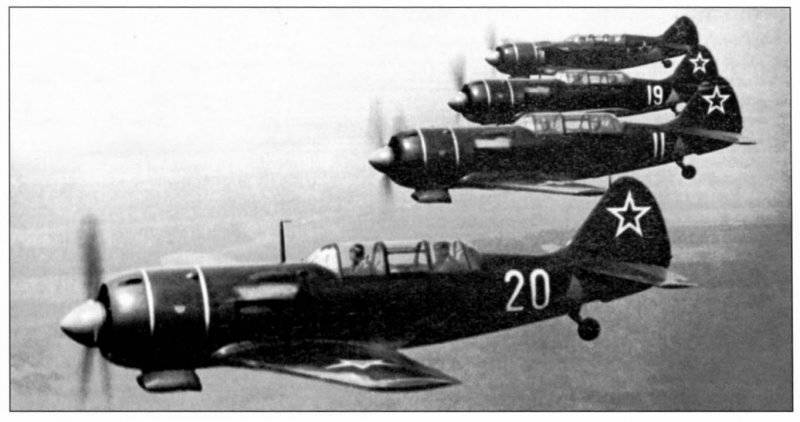
Information